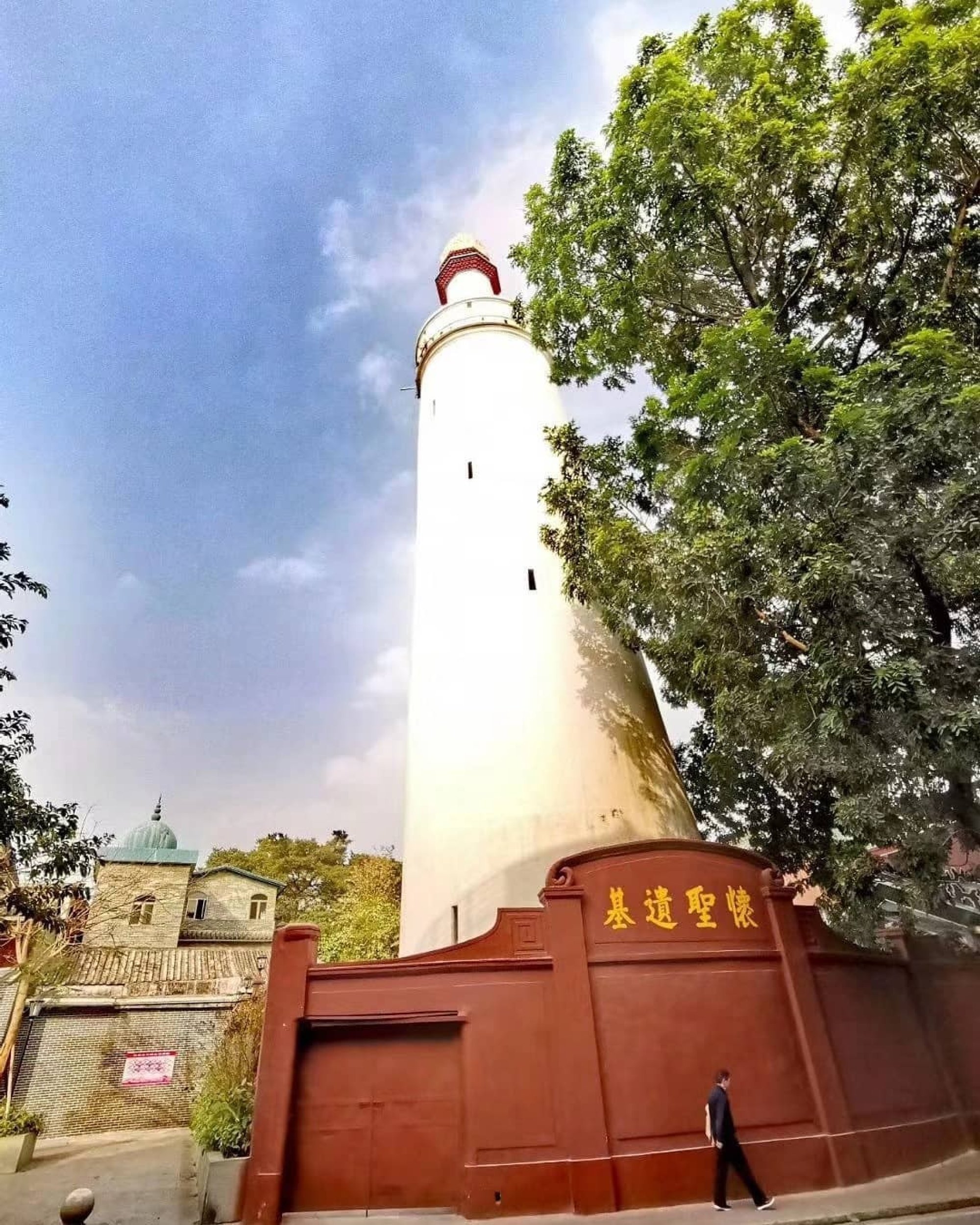
The glories of China’s oldest mosque, Guangzhou’s Huaisheng Mosque, and its doubtful origin story
- With Hong Kong looking to the Islamic Middle East for investment, how many in the city know about China’s oldest mosque, an hour away by high-speed train?
- At the heart of what was Guangzhou’s Muslim quarter, Huaisheng Mosque probably dates from the 10th century; its minaret has national-level cultural protection
A Hong Kong friend recently asked me about Islam, and if the Chinese names for Islam, Hui Jiao and Yisilan Jiao in Mandarin, meant different things. I’m not an expert on Islam, but I know what the Five Pillars of Islam are, and that halal food isn’t simply “pork free”.
Yisilan Jiao, from the Mandarin phonetic transliteration of “Islam”, is used more often in official contexts now, but Hui Jiao is still very widely used. Old language habits die hard.
In the past few years, Hong Kong has made high-profile overtures to the Middle East, and its predominantly Muslim populations, hoping to mine the region as a source of investment, trade and tourists.


Standing at 56 Guangta Lu in Guangzhou’s Yuexiu district is the Huaisheng Mosque, perhaps the oldest mosque in China. Its old English name was Lighthouse Mosque, after its 36-metre tall minaret, which used to also function as a lighthouse.
According to Hui tradition, it was Sa’d ibn Abi Waqqas, one of the companions of the prophet Muhammad, who brought Islam to China during the early years of the Tang dynasty (618–907).
Sent by Muhammad to spread the Islamic faith eastward, Sa’d sailed along the maritime Silk Road and eventually arrived at the port city of Guangzhou.

In 627, the story goes, Sa’d and the Muslim merchants living in Guangzhou raised the money to build a mosque, naming it Huaisheng Si, the “temple of embracing the holy (prophet)”.
This story of Sa’d visiting China and building Huaisheng Mosque is almost certainly untrue. Given the sheer historical and religious significance of the would-be mission, there is not a single mention in Islamic accounts of Sa’d ever travelling to China.
What we do know is that Muslim merchants from the Arab world and Persia were already trading and living in the major southern port cities of Guangzhou, Quanzhou and Yangzhou in the 7th century.
Many settled and married local women. Their descendants, who continued to practise Islam, became part of the Hui ethnic group in China.
Huaisheng Mosque was probably founded in the Song period (960–1279), and the present structure dates from 1695. Its minaret is a major cultural heritage site under national-level protection, which is the highest grade of immovable cultural relics in China.

I visited Huaisheng Mosque many years ago.
Like many historical mosques in China, it is a traditional Chinese building with Islamic characteristics. You’d think you’re in a Chinese temple until you notice the Arabic writing and the absence of altars with images.
The 500-metre long Guangta Lu is no longer exclusively a Muslim quarter, but it’s still dotted with many halal restaurants and speciality shops that cater to Muslims.

